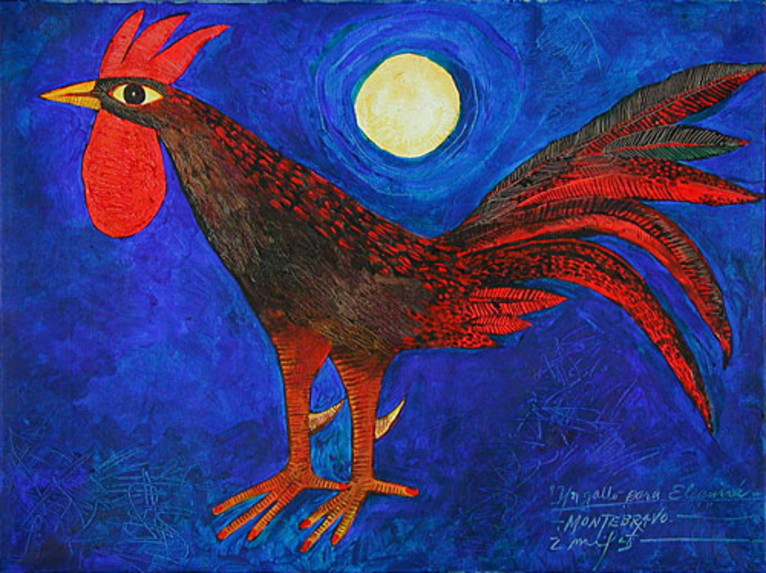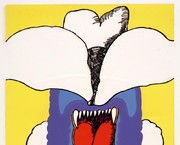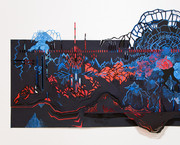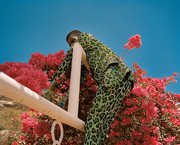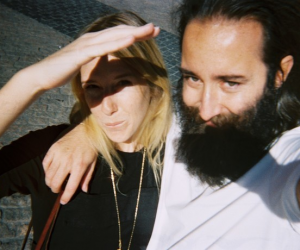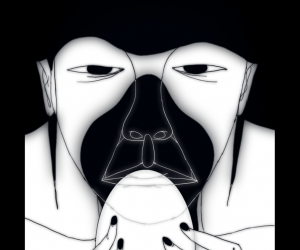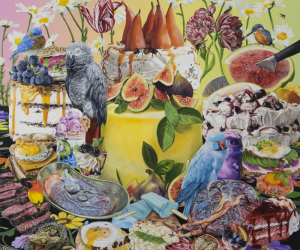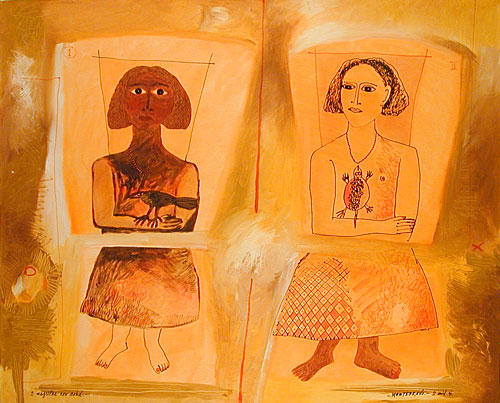
José Garcia Montebravo
Posted by Fabio 20 July 2010
After a long illness, Cuban artist José Garcia Montebravo died last friday the 16th of July at home in the town of Cienfuegos. Many of his paintings depict birds, animals and the lush Cuban plant life but with a strength which suggests an allegorical or religious symbolism as well. He has exhibited individually and collectively, in Europe and the United States as well as in Cuba.
“I was born in Cienfuegos on October 15, 1953. I began painting when I was a child, and I have been painting professionally since 1979 or 1980, after I graduated from university. I am a geography professor at Villa Clara Superior Pedagogical Institute.
I am a self-taught painter. My foundation is a phrase of Carlos Puebla. He said: “I do not have how, but I have why”. That is what I have done, what I try to do using literary and visual informtried to apply that phrase to drawing and painting. I vigorously tried to do it in the best way possible, despite not having how.
Critics say whatever they want. Sometimes I partially agree, others I do not agree at all. Sometimes I laugh because, since critics say whatever they want, some of them are very pertinent while others say silly things for the sake of saying something.
I know some critics who are not very well-known but make me rediscover my own work. Sometimes I have done some things without realizing what they mean and later I have agreed with the opinions of those critics.
My source of inspiration is the universal Cuban painting. I find inspiration in the works of the greatest Cuban painters of all time and the greatest universal painters known. Before I became a painter, I was a philatelist and owner of one of the most important art collections in Cuba. I had to study very much to gather all that information.
Afterwards I realized that, like all the things related to philately, my sources of information were very wide, and I tried to restrict them to some painters, a sort of biography. I participated in international exhibitions and won prizes with “La historia de la pintura en Cuba” (The history of painting in Cuba). It began with pictographs and continued with the coastal journeys of the foreigners who came to Cuba. There was a link between the historical and the biographical facts of the characters. Thus began my interest in the collection.
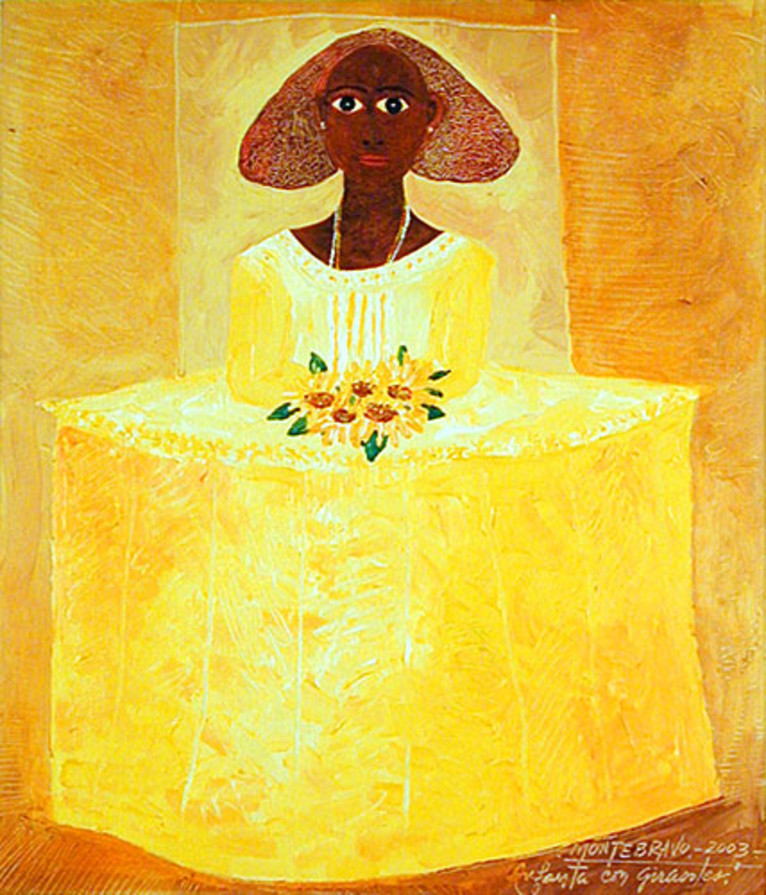 With the passage of time, I left the collection and continued painting incessantly. I was very interested in avant-garde painters, from whom I took many visual elements. I began to look for information in Cuban magazines. In “Revolucion y Cultura” (Revolution and Culture), I found many images of exhibitions and the works of Zaida del Rio, Roberto Fabelo, and Flora Fong. Every one of them influenced my work.
With the passage of time, I left the collection and continued painting incessantly. I was very interested in avant-garde painters, from whom I took many visual elements. I began to look for information in Cuban magazines. In “Revolucion y Cultura” (Revolution and Culture), I found many images of exhibitions and the works of Zaida del Rio, Roberto Fabelo, and Flora Fong. Every one of them influenced my work.
Samuel Feijoo founded a drawing school in Las Villas. I began making little drawings that were simpler than the ones I used to make. I studied the texts and the images of the series of magazines “Islas” (Islands) and “Signos” (Signs). One day somebody told me: “Stop looking at those magazines and start making your own things”. Then I began drawing incessantly.
My first drawings were lost because I gave them away. Afterwards, I began drawing again and somebody told me: “Keep drawing; you are a draftsman, not a painter”. That was exactly the opposite of what I thought.
I studied some elements of “La Regla de Ocha” (Santeria). I even attended two postgraduate workshops. I visited many “santeros” and paid worship services to learn what happened there. I tried to go into that world until I realized what I wanted to do.
I make black dolls that I call “infantas”. Not everybody gets who they are. Ninety percent of the people do not know who the dolls really are because they want to see them as deities. They want to see a saint; they want to see Obatala or Yemaya.
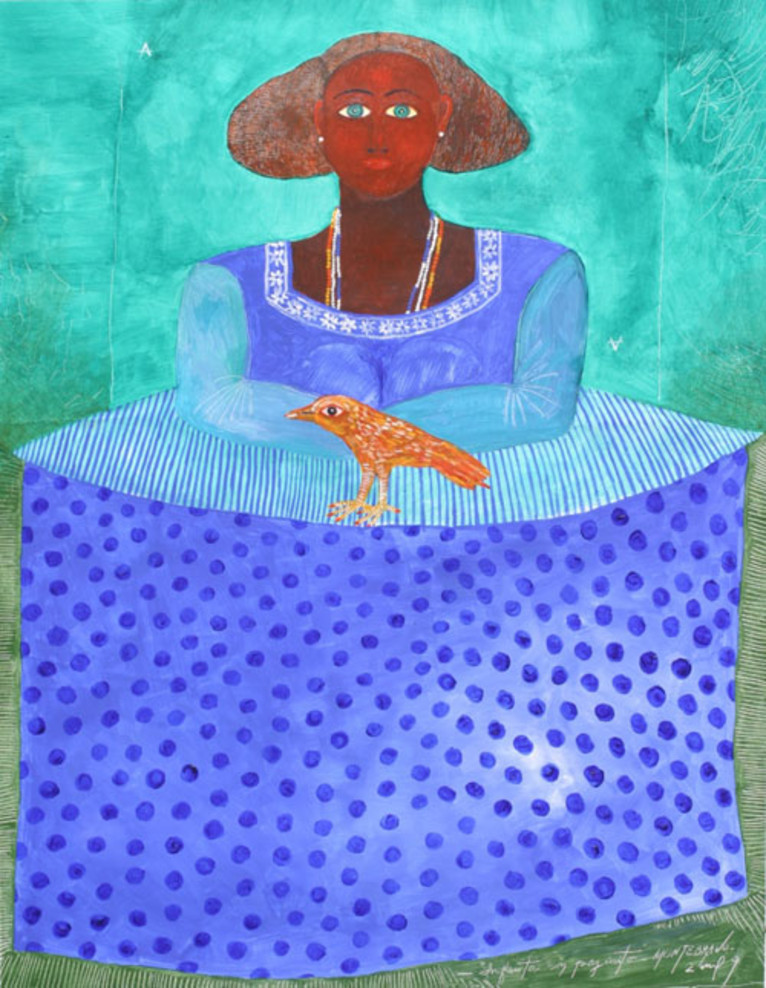 Sometimes I please them by naming the dolls after the Orichas, but they are simple little black dolls. They are daughters of the mount. “El Monte” (The Mount) is a book written by Lydia Cabrera. The book depicts a sacred place where dead people, spirits, animals, and plants. I carry that world inside me, the world of animals, plants, and messengers of each person.
Sometimes I please them by naming the dolls after the Orichas, but they are simple little black dolls. They are daughters of the mount. “El Monte” (The Mount) is a book written by Lydia Cabrera. The book depicts a sacred place where dead people, spirits, animals, and plants. I carry that world inside me, the world of animals, plants, and messengers of each person.
I think that not all the black people who arrived in Cuba from Africa as slaves were common people. Many of them had privileged positions within their tribes, were sons of African kings, were African princes. Therefore, they were nobles of the mount.
There is a concept related to “the seashells that are thrown” (Santeria ritual) by a santero who tells you: “You are a son of Mr. So-and-so, Mrs. So-and-so and all the deities”. From there I paint the simple little black doll with the necklaces and the clothes characteristic of the deity to which she belongs. She is not the deity.
The costume is the link with universal painting. The painting “Las Meninas”, made by Diego Velazquez, has been widely discussed regarding universal art. Pablo Picasso, for example, made very long series.
Latin American painters have treated that theme too. Painters all over the world have worked on it. I did the same after seeing its visual possibilities. I worked with collages, palette knives, pencils, inks, crayons, oil paints, and impastos.
Carlos Enriquez’ transparencies always impressed me, so did Rene Portocarrero’sfree way of working; and the rooster, the masses, and all the themes of Mariano Rodriguez. If I delve into the academic world, I will find interesting things in the work of Romanach, Menocal and 20 more artists.
I mostly like informative literature, related to my artistic restlessness. In that category are authors like Fernando Ortiz, Lydia Cabrera, and Miguel Barnet. It is not a literary reading, but an informative one.
I simply have a great interest in all that world of fantasy, all that world of right and wrong. I live by art and I do whatever I want. I have not had any difficulty. I have the possibility of living calmly and doing whatever I want.”
 José Garcia Montebravo
José Garcia Montebravo
October 1953 – July 2010
All images courtesy of Anthony Hart Fisher – Indigo Arts Gallery

